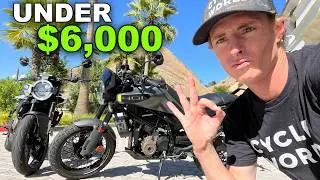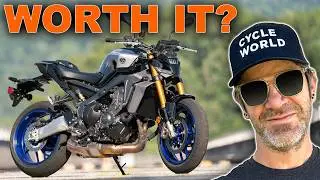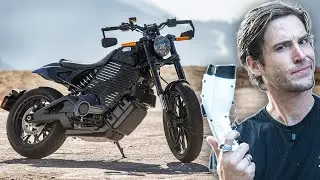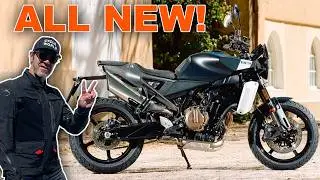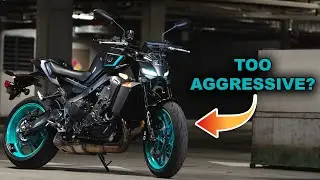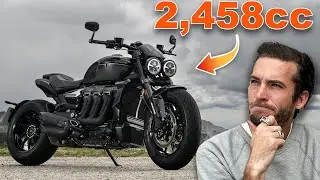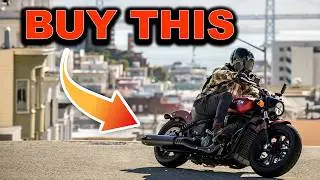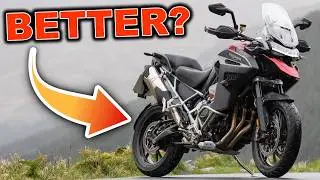Triumph Daytona 675 vs. Daytona Moto2 765 | Comparison
How does the latest, all-singing Triumph Daytona 765 special edition compare to the original Daytona 675 that took the supersport class by storm back in 2006?
Nostalgia is a menace. It’s particularly potent when linked to things from our younger years, especially things we wanted but couldn’t have. Classic bikes, cars, trucks; anyone with an ounce of petrolhead about them has to stop and take a second glance when something old, carbureted, and noisy rolls past.
Which is why it feels completely weird to be doing an old-versus-new test in which the Daytona 675 plays the part of the old-timer. I vividly remember how excited I was when these were launched, drooling over early styling sketches, rushing to see one up close when someone rolled in at the local bike meet on a fresh-from-the-dealer 675 in graphite grey.
I remember the sound. I’m 34 years old; I can’t believe I’m doing the “I remember when they came out” bit. But 15 years is 15 years, and a lot has changed in that time. The 600cc supersport class that the 675 stood atop has all but vanished. Bikes now come with compulsory, non-switchable ABS. And Triumph has gone from an underdog British bike maker to a globally recognized manufacturer of top-quality motorcycles. Not only that, but it’s gone from having a hand in a few supersport race teams to being the engine supplier for the entire Moto2 grid.
We thought we had lost the Daytona for good in 2016, when production of the 675 ended, but under consumer pressure Triumph launched the Daytona Moto2 765 Limited Edition in 2020. So what better excuse to take the original and the latest to a track and spend some time chewing up tires to see how far the three-cylinder Daytona has come?
Full disclosure: The Daytona 675 is one of my all-time favorite sportbikes. I lusted after them, raced them, crashed them, and even had a hand in the creation of the 2009 and 2013 models as a young design engineer at Triumph. This model here is my own, a 2006 bike fitted with the nose cone from the 2009 update purely because one of my best mates designed it. I remember sitting and staring at it on his 3D model thinking it looked like Donnie Darko, but that’s what 12-hour days at a CAD terminal will do to you.
The 675 is still a stunning-looking bike, and now more than ever it looks impossibly compact. It’s as skinny as a V-twin from head-on, while the tall seat and low, tucked-in bars are purposeful and uncompromising. This was a bike built before manufacturers worried quite so much about pleasing every potential customer with a nice low seat and comfy riding position. There’s no traction control, no ABS, not even a quickshifter. Hell, we were just excited to discover it has a manual lap timer built into the dash. I wonder how many of these were wrecked by people trying to beat their best lap time back from the shops. Simple switch gear sits next to a nonadjustable clutch lever and a radial Nissin master cylinder that, in fairness, still looks reasonably up to date.
Jumping across to the new 765 brings a mixture of familiarity and new touches. Each time I’ve decided it’s exactly like the old bike, something new catches my eye. The main spars of the frame look the same on both bikes, but the new TFT dash and fancy switch gear is worlds away from the original. There is no denying the styling cues between the two bikes, but in the flesh the new one is definitely more refined, better finished. And the exhaust on the 765 gives it a proper Moto2-replica feel, with the bulk hidden under the bellypan. The old bike is cheating a bit here, as the bulky, heavy stock underseat silencer is long gone, ditched for a lighter aftermarket unit. The riding position is definitely more roomy on the 765, still an aggressive sportbike stance, but with less of a feeling of being tucked in tight behind the fairing.
Firing up both bikes to warm up in the pits really highlights how much development Triumph has put into the original 675 triple. The old bike sounds so much harsher, so much more mechanical as it whirrs away the morning condensation. Even on the stock silencer, the 675 has a more rasping and aggressive exhaust note, released before the ever-tightening net of emissions and noise control closed in. That same net, in the end, was the final nail in the coffin of the Daytona 675.
Full article here: https://www.cycleworld.com/story/moto...
Subscribe to Cycle World Youtube: http://www.youtube.com/c/cycleworld?s...
Read more from Cycle World: https://www.cycleworld.com/
Buy Cycle World Merch: https://teespring.com/stores/cycleworld








